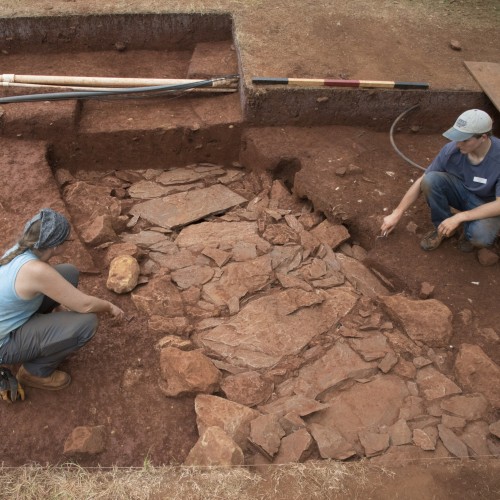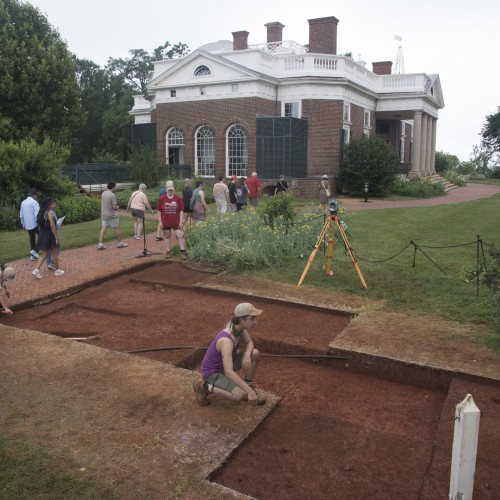March 18, 2024
Paper presented at the Mid-Atlantic Archaeological Conference in Ocean’s City, MD March 7-10, 2024
By Corey Sattes and Chris Devine
In 1957 and 1958, two Harvard graduate students—Oriol Pi-Sunyer and Vladimir Markotic—undertook respective archaeological investigations at Monticello. They exposed building foundations on Mulberry Row as well as the garden wall and pavilion. Pi-Sunyer and Markotic collected large and diverse artifact assemblages, including an array of fascinating architectural, metal, and ceramic artifacts associated with the lives of those on the mountaintop. For decades, archaeologists refrained from analyzing the assemblages, which had been boxed together and labeled ambiguously. However, the fortuitous discovery of fieldwork records and subsequent investigations have provided the keys necessary to undertake a re-organization and re-examination of these two projects. This paper will outline the history of these excavations, the methods by which we parsed out their resulting artifacts, and the ways these assemblages will contribute to our historical interpretation of the mountaintop as well as our efforts to curate a collection for educational programming.




















